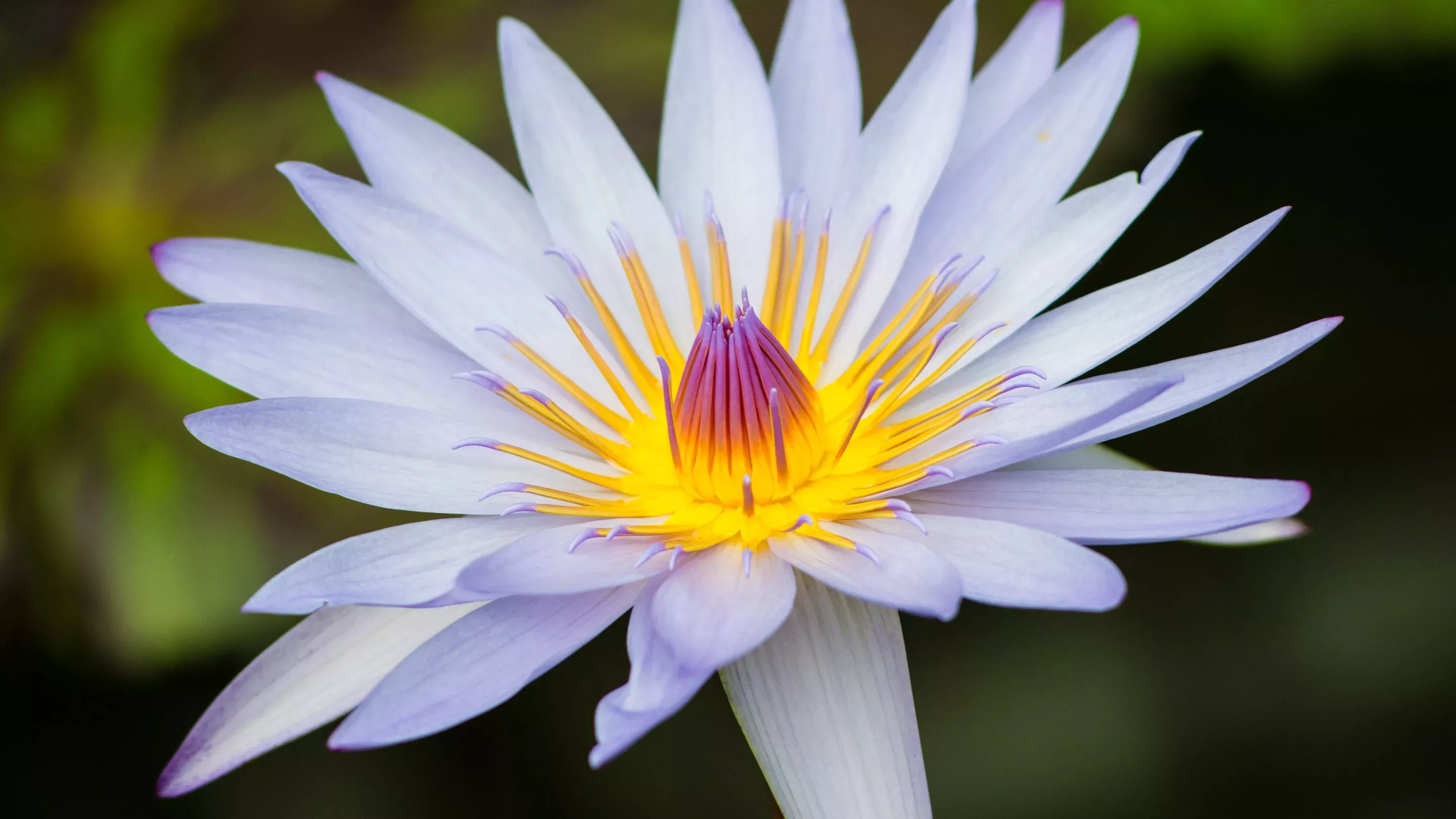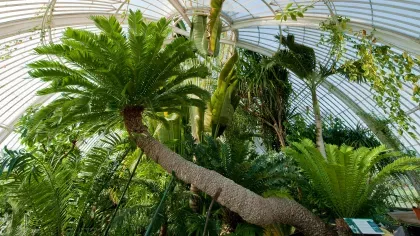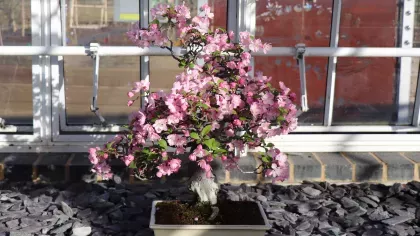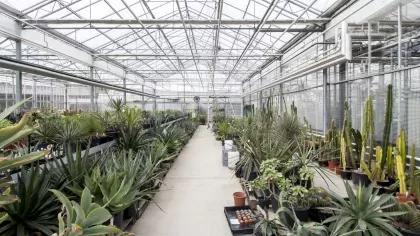5 May 2020
Ginkgo biloba: The tree that outlived the dinosaurs
Find out why one of the oldest trees in our Gardens is so unique.

Our ancient Ginkgo biloba is one of the oldest and most extraordinary trees in our Gardens.
Commonly known as the maidenhair tree, it was planted here at Kew centuries ago in 1762, only three years after our original botanic garden was established.
Growing near The Hive, our Ginkgo biloba has deeply cracked brown bark and beautiful fan-shaped, two-lobed green leaves that turn a magnificent golden-yellow in autumn.
But what else makes this tree so remarkable?
One of Kew’s original trees
This Ginkgo is one of Kew's 'Old Lions', the few surviving trees planted in the early botanic garden started by Princess Augusta, the mother of King George III, in 1759.
Native to China, it was one of the first of its species to be planted in the UK.
Even though our maidenhair tree is as old as the Gardens themselves, it’s a baby in terms of the lifespan of the species.
Did you know? The oldest recorded maidenhair tree is a whopping 3,500 years old.
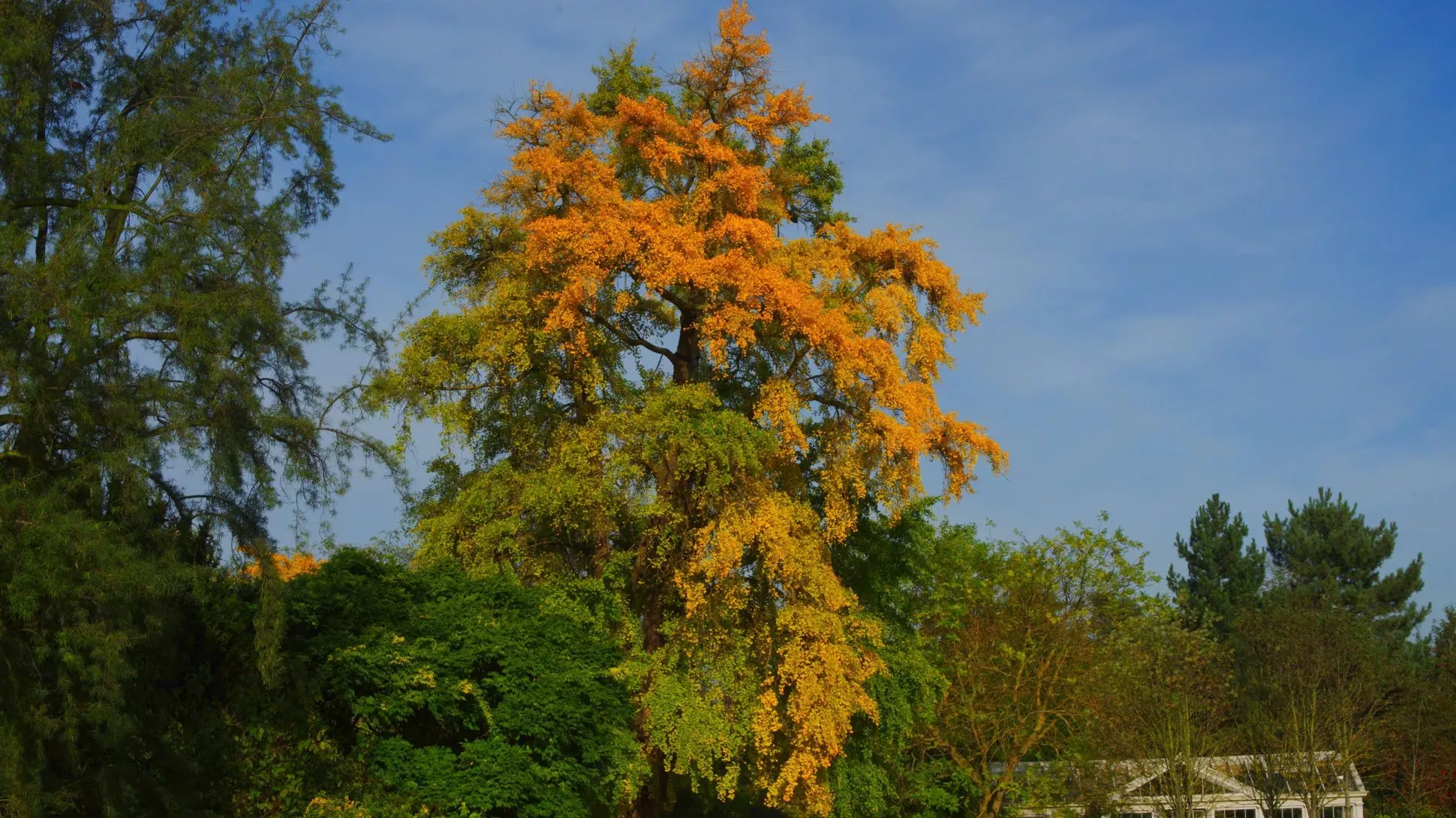
Sole survivor
The Ginkgo biloba is one of the oldest living tree species in the world.
It's the sole survivor of an ancient group of trees that date back to before dinosaurs roamed the Earth – creatures that lived between 245 and 66 million years ago.
It’s so ancient, the species is known as a 'living fossil'.
Fossils of Ginkgo leaves have been discovered that date back more than 200 million years. They are almost identical to maidenhair tree leaves of today.
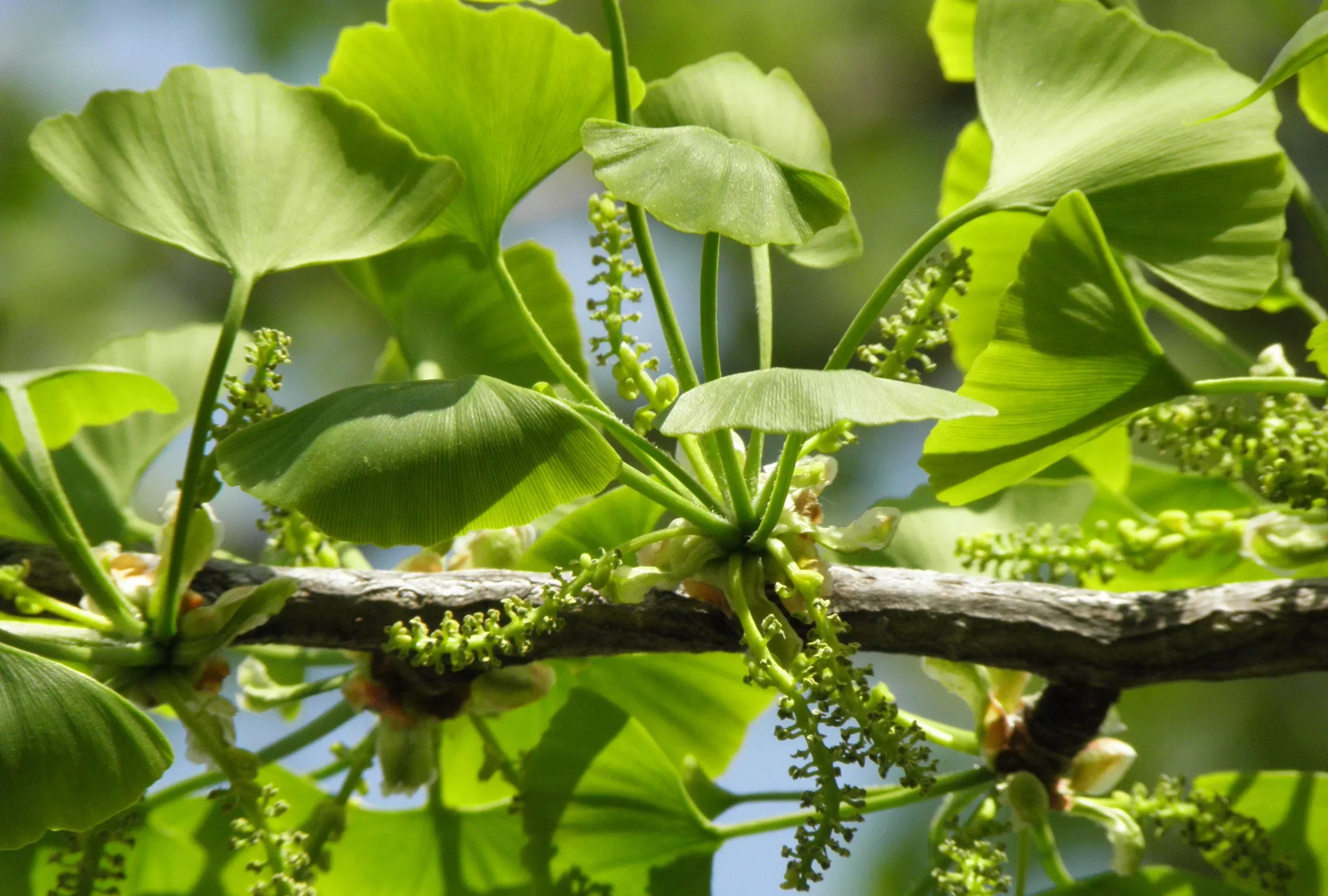

Unique by nature
This stunning tree is a very solitary species nowadays.
Amazingly, it is the only member of its genus (Ginkgo), which is the only genus in its family (Ginkgoaceae), which is the only family in its order (Ginkgoales), which is the only order in its subclass (Ginkgoidae).
The tree is also the only living connection between ferns and conifers.
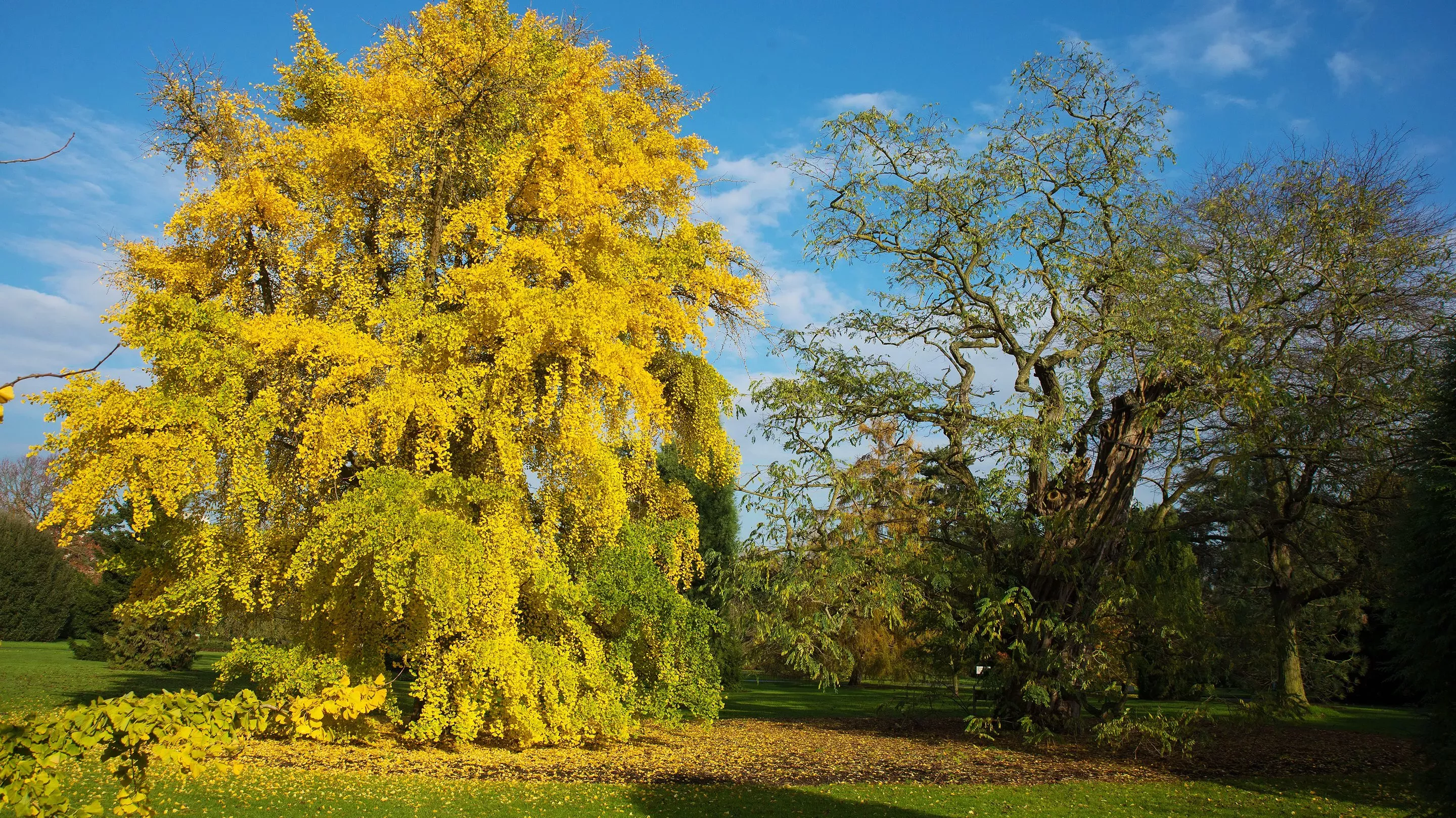
Evolutionary distinct and endangered
Ginkgo biloba is rated as Endangered (EN) according to IUCN Red List criteria.
The singular species has also been given a high priority conservation status, as determined by the Evolutionary Distinct and Globally Endangered (EDGE) method.
Species are ranked based on their evolutionary distinctiveness and the extinction risks they face according to IUCN Red List assessments.
The maidenhair tree has the second highest EDGE score on the EDGE list for gymnosperms (a small group of naked-seed-bearing plants of just over 1,000 species), and is number one for evolutionary distinctiveness (ED).
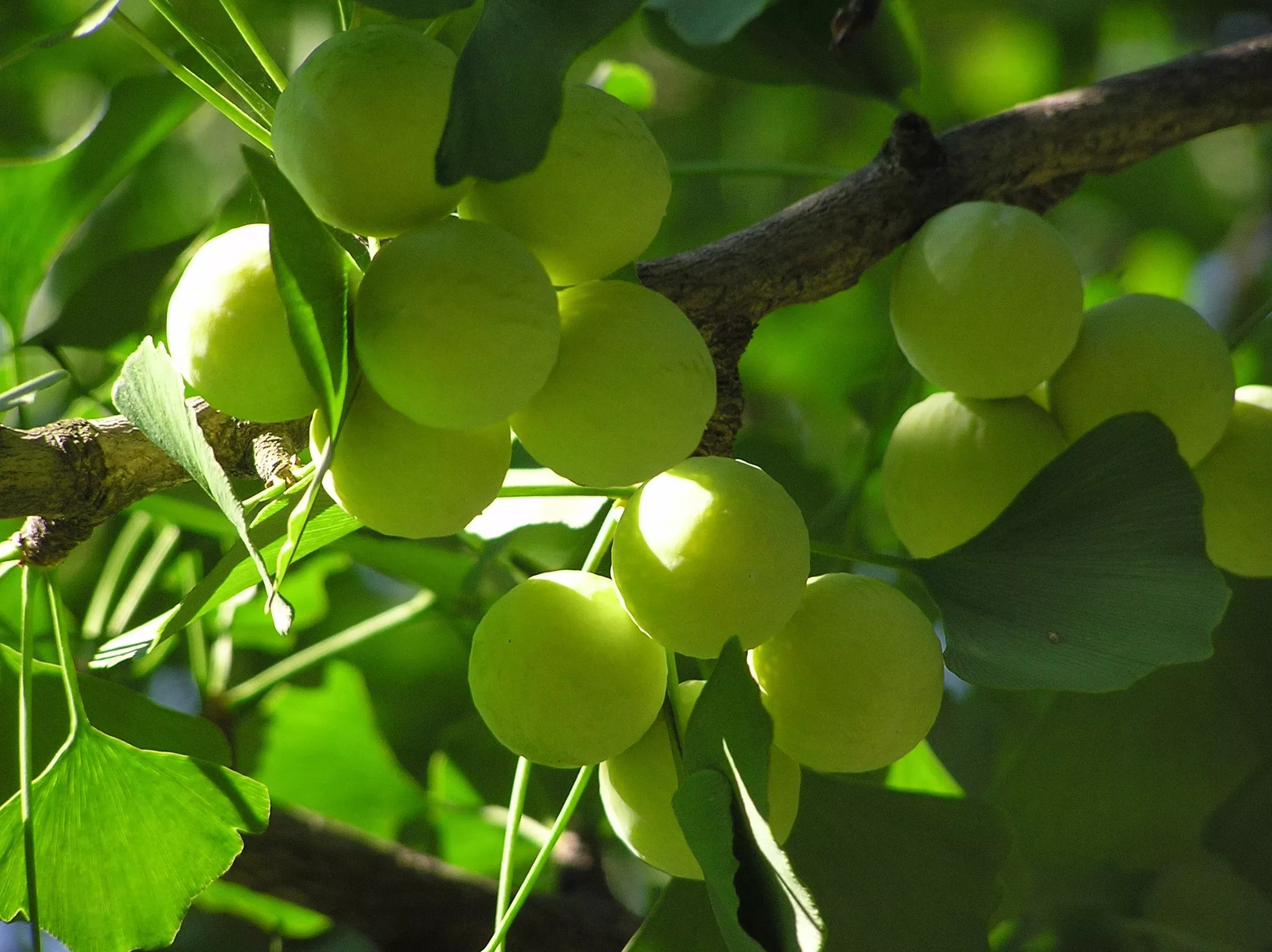
Living gymnosperms (made up of four plant groups: ginkgo, conifers, cycads, and gnetophytes) are one of the most threatened groups of living organisms on the planet.
Though cultivated maidenhair trees are seen throughout the world, they are rare in the wild with only a few natural populations in China.
Here at Kew, we are monitoring and carrying out conservation assessments of the species as part of the IUCN Sampled Red List Index for Plants. This will help reveal trends in extinction risk and help focus conservation efforts where they are needed most.
Did you know? Ginkgo biloba trees can reach 40m in height.

Smelly seeds
Female maidenhair trees start bearing seeds when they reach maturity and are fertilised by pollen from a male tree.
The large seeds have a rounded fleshy outer coat and drop to the ground in autumn. But as this outer layer decays, it emits a horrible smell like rancid butter.
Because of this, male plants are often chosen for ornamental garden use.
We collect these seeds from our Gardens during autumn to produce seedlings and rootstocks for grafting.
These seedlings can be grown in our Arboretum Nursery – after two years the plants can be as tall as 1.5m.
Find out more about where Kew's trees are born in the video below...
Name game
The Latin species name ‘biloba’ comes from the shape of the distinct leaves, meaning ‘two lobes’.
Its common English name ‘maidenhair tree' derives from the similarity of the leaves to those of maidenhair ferns (Adiantum).
The royal touch
Our 'Old Lion' Ginkgo tree isn't the only one thriving here – several specimens are growing in the Gardens.
One of these, near the Orangery, was planted by none other than Her Majesty The Queen in 2009, to celebrate 250 years of the Gardens.
